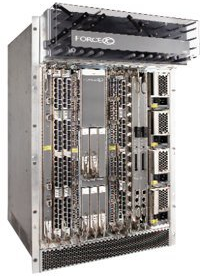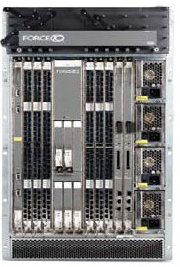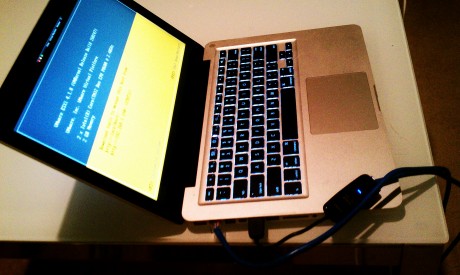

In this lab I will use a Dell Force10 E600i chassis [FTOS 8.3.1.1] to demonstrate how to recover if you forget your console password. The first thing to do to prepare for this lab is to log on through the console, set a console password, and reload the chassis as demonstrated below. Continue reading
Recover from a Forgotten Console Password on Dell Force10 E-Series Switches
Perl – Initial Values and Context Based Evaluation
It’s important to remember that in Perl all scalar variables have an initial value of the null string, “”. You do not need to define a value for scalar variables unless you are using “strict” mode. Knowing this, what do you think the output of the below code will be? Continue reading
Creating a LAG between an ESXi vSwitch and a Physical Switch
In this lab I am going to create a LAG (Link Aggregation Group) between an ESXi vSwitch and a physical switch. You can use Cisco, Force10 Dell, Juniper, or any other manufacturer for the physical switch. Depending on the switch you use, the commands may vary on the physical switch for creating a LAG (referred to as port-channel by Force10 Dell and etherchannel by Cisco). I will not get into details of creating a LAG; please reference my earlier posts Creating a Link Aggregation Group (LAG) in FTOS and Setting up Cisco EtherChannels – Static, PAgP, and LACP for this information. Continue reading
Open Virtualization Format – VMs in transit

The Open Virtual Machine Format (OVF) describes a format for the packaging and distribution of virtual machines (VMs). It is touted as open, secure, and portable. OVF can be seen as a packaging format for software appliances. I see it as a self-contained software solution that allows for VMs to be moved from one hypervisor to another. Continue reading
Screen Scraping with Perl to get the top 25 Websites and the Web Servers they use
This was a really fun little script I wrote that I thought I would share with everyone. I basically wrote a Perl script using the popular LWP Perl module to screen scrape and obtain the top 25 sites and the web servers they use. Once I screen scrape to get the relevant website, I am able to send a specific request to the server to obtain further information. Continue reading
Setup your Apple MacBook Pro with VMware ESXi on top of Fusion
How to Stack Dell Force10 S60 Switches

In this lab I use two Dell Force10 S60 switches [FTOS 8.3.3.4] to demonstrate how to stack two S60 switches together. By stacking the switches you can increase port density and manage the switches together as if it were one large single unit. The stack can be envisioned as one large chassis with the primary management switch as the primary RPM (Route Processor Module), the secondary management switch as the standby RPM, and other member switches as linecards. Continue reading
Load Balancing with EIGRP
RIP, RIPv2, IGRP, EIGRP and OSPF are all routing protocols that support equal cost load balancing but IGRP and EIGRP can also support unequal cost load balancing. However, unlike IGRP, EIGRP supports VLSM (Variable Length Subnet Masking). Below I use a Cisco 3560G router [IOS Version 12.2(40)SE] to show how you can have EIRGP load-balance across up to 32 links (equal or unequal). By default, EIGRP will provide equal-cost load balancing across up to 4 links. You can disable load balancing by setting the ‘maximum-paths’ to ‘1’. Continue reading




 Twitter
Twitter LinkedIn
LinkedIn Youtube
Youtube RSS
RSS